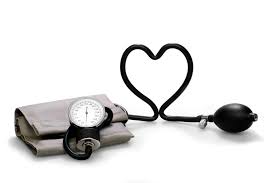Source: forbes.com
Blood pressure is the pressure of circulating blood against the walls of blood vessels. It is one of our main vital signs and one of the most commonly monitored variables in all types of medical check-ups, in triage before admission to hospital, etc., and is an especially informative parameter of the general condition of a patient. Blood pressure varies greatly from one individual to another, is subject to circadian rhythms, and is affected by stress, nutritional factors, medication intake and disease. It is a universally understood measure, and is essential from a clinical point of view. In addition, high blood pressure increases the risk of heart attack and strokes, while lower blood pressure is seen as positive.
In terms of health monitoring, a key element in the transition toward preventive health systems, accurate and continual monitoring of blood pressure is widely seen as a fundamental parameter. Knowing a patient’s heart rate, at a time when more and more people are using wearables such as the Apple Watch, which provide continuous recording through photoplethysmography or even a pretty reliable electrocardiogram, is certainly useful, but more important is being able to combine that information with other parameters. Talking to cardiologists, the parameter they all say is most useful for diagnoses, besides heart rhythm, is blood pressure.
Now, a group of researchers from the University of Toronto have come up with a way to measure blood pressure accurately using a smartphone camera and a procedure similar to taking a selfie. The measurement is carried out by transdermal optical imaging: the light emitted by the smartphone camera bounces off the proteins near the surface of the skin at different speeds, allowing a minimal measurement of changes in hemoglobin, which with a battery of 900 images taken in 30 seconds provides an accurate blood pressure reading.
It’s not clear yet whether the procedure works for all skin types, which is important given the higher incidence of high blood pressure and associated mortality in black people, but the idea, without a doubt, has potential, because dedicating thirty seconds a day to taking one’s blood pressure is not difficult and could help detect numerous health problems early. In addition, regardless of whether something is detected or not, the information collected could, if shared, feed numerous studies and contribute to the advancement of medical science as a whole.
Wearables of various types that record our vital parameters, beds that monitor our sleep, simple but precise analytics that replace checks we used to carry out once a year or less, and artificial intelligence to process all these data are just some of the elements that will radically alter healthcare in the coming years, based on a pro-active approach rather than waiting until we fall sick. This type of innovation and its possibilities, both for research and medical practice, have to be introduced into university programs as soon as possible if we want to see a real change in the mentality of health practitioners.
